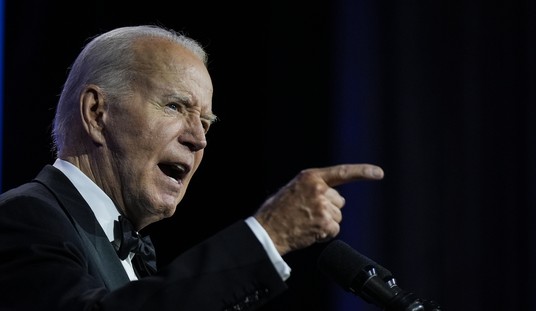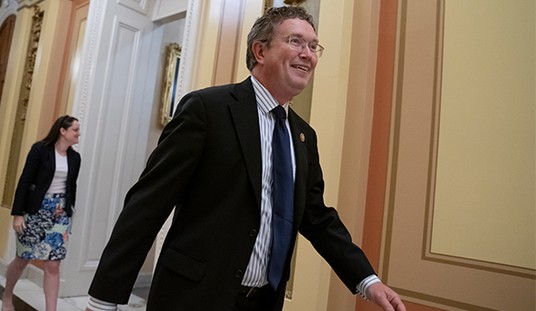At the beginning of this century, Americans believed in the world. Why wouldn’t we? The United States emerged from the Cold War as the planet’s sole economic and military superpower. We had shaped the globe’s institutions to our liking; they functioned under our captaincy. Then in 2001, our cities and people were attacked. The world displayed a month or two’s worth of empathy — since then, apathy. The organizations that anchor international rules have proven ineffective and corrupt. Nearly every American accepts this truism: the United Nations cannot prevent a nuclear 9/11. And that is what it’s all about, is it not?
Though 9/11 was nine years ago, the act fundamentally restructured the American conception of internationalism. Colloquially, we say the attacks changed everything; in actuality, more was clarified than changed. The collapse of the World Trade Center did not make obsolete the timeless instruments of statecraft. International harmony and multilateral accords are good insofar as those who participate in these pursuits continue to adhere to the rules in which they are grounded. As a foundation for peace and order, these concepts are merely sometimes necessary — but are always insufficient.
Just as a prudent lawmaker would consider the legislation of morality a futile effort, so too those involved in foreign affairs ought to remind themselves that the attempted adjudication of human behavior is bound to fail without the credible threat of force. The liberal democracies that comprise the free world are precariously in error to assume their adversaries are as equally devoted to the perfection of man as they. The belief that all cultures are equal — all peoples alike and with similar desires — is nothing more than collective hope-think; it is the most dangerous kind of mirror-imaging. It is a great lie.
In some quarters, the “enemy” has become an almost passé notion, where al-Qaeda killers are said to be misguided or politically immature — “a friend we haven’t done enough for yet,” in the words of philosopher Lee Harris. This therapeutic, post-modern worldview is prevalent in government and academia, and it directly undermines a society’s ability to interpret reality.
No international body has prevented Kim Jong Il from sinking South Korean vessels and kidnapping Japanese girls. Amnesty International never tamed the sadistic tendencies of Uday Hussein. The United Nations bureaucracy has shown no interest in stopping Vladimir Putin from poisoning people he dislikes. The promises of economic interdependence have yet to convince Mullah Omar or Dr. Zawahiri to take their theological inclinations a bit less seriously, and to discontinue their violence against innocents worldwide. Our enemies of the Islamist variety want atomic bombs. They want them for use. UN Secretary-General Ban Ki-moon does not intimidate them. Dictators are unimpressed, too.
The despot is not interested in international organizations, save for his attempts to use the cult of victimization to bend these organizations to his will. Take the Islamists’ support for the Organization of the Islamic Conference to compel the UN Human Rights Council to make criticism or mockery of Islam a crime under international law. Does this support underscore the Islamists’ respect for the UN or dedication to the rule of law? No. For if these international bodies reject their demands — and subsequently, an unflattering cartoon lampooning their beliefs is drawn by someone, somewhere — then all bets are off. Fatwas are issued, embassies overrun, and unsuspecting good men and women killed. Such Islamist deviants are thus able to pursue the institutionalization of their deviancy, all the while operating outside the purview of international norms. It is not the mere hijacking of planes they seek, but of the apparatus of international order.
People of all philosophical persuasions ought to be able to acknowledge three unassailable truths: 1) there are dozens of international organizations comprised of hundreds of thousands of individuals who perceive a religious obligation to destroy American cities; 2) these individuals are the twisted-type; they’re sincere in their warped convictions and determined to accomplish their monstrous objective; they cannot be deterred, dissuaded, or bought off; 3) these individuals will one day ascertain the atomic means to achieve their calamitous ends — sooner rather than later, certainly within most of our lifetimes.
Martin Shubik, the Yale economist, liked to draw a curve of the number of civilians ten determined men could kill before they were killed themselves. Throughout history, the change in this number is sobering. As time goes on, fewer men have always been able to kill more people. Consequently, it is not fatalistic or paranoid to assume that we will likely one day witness ten men with ten vans or suitcases attempting to vaporize ten American metropolises. And if ten targets proved too ambitious — bin Laden called off the West Coast attacks on 9/11, after all — then five targets would suffice. St. Louis might make the cut, but New York City would not.
The intent is there. The technology exists and is proliferating exponentially. This isn’t a possibility. It’s a probability.
What would this day of days look like? Jerome Corsi once wrote a second-by-second synopsis of a nuclear attack in midtown Manhattan. The improvised nuclear device (IND) is in the back of a truck, driven by the terror cell’s leader. The operatives know they are going to die. “Assume the IND is detonated outside the Empire State Building at 11:45 a.m. Assume that the weapon is a 150-kiloton HEU gun-type bomb,” Corsi states.
1 second after detonation: “a shock wave with an overpressure of 20 psi (pounds per square inch) extends four-tenths of a mile from ground zero. This destroys the Empire State Building and all other buildings within that radius, including Madison Square Garden, Penn Station and the New York Public Library.” A mushroom cloud rises into the sky from the center of Manhattan. In this second, between 75,000 and 100,000 people die. “New York City falls off the world communication map.” Nobody knows what happened.
4 seconds after detonation: “The shock wave extends for at least a mile with an overpressure of 10 psi … all concrete and steel-reinforced commercial buildings are destroyed or so severely damaged that they begin to collapse.” An additional 300,000 people perish. The survivors are all burned and injured, buried in hundreds of feet of rubble. Those in the subway system are trapped underground. There is no radio, television, or telephone communication with New York City.
6 seconds after detonation: Midtown is gone. The Chrysler Building, Grand Central Station, the skyscrapers on Madison and Park Avenue — destroyed. Another 220,000 people are killed. “The outside world has virtually no contact with New York City. The first six seconds is too short an interval for government officials in Washington, D.C., to have any real idea what has happened to New York.”
Though Corsi’s reputation has suffered somewhat, his portrayal of a nuclear attack is a tour de force. Corsi elaborates the horror: the situation one hour after detonation, by the end of the day, contemplating the U.S. response, and so forth. More than 1.5 million people are killed; another 1.5 million injured, more than 75% of which will die within a week. Roads, bridges, and tunnels will be unusable. There will be no police, no fire department, no government authorities; buildings will burn until they fall. The entire city would be contaminated. Thousands would be trapped in elevators and beneath bricks, steel, rubble, and debris.
How would the United States respond? Against whom would we retaliate — and in what way? The attack occurred from an unknowable source. All evidence was destroyed in the blast. As time goes on, what powers would the American public concede to the government? How could anyone ever move their family to a big American city again? An era of de-urbanization would begin at once.
This is the Islamists’ Manhattan Project. Osama bin Laden calls it a “religious duty.” The sole defense against this scenario is executive force: actionable intelligence, military strength, strong partnerships with allies, human espionage, covert and psychological operations, economic and diplomatic pressure — and a whole lot of killing and capturing the enemy, wherever he is, for decades if need be.
The benefits of cultural and economic connectivity — the “togetherness” of globalization — provide our world with great promise and advantageous opportunity for peace. International clubs like the United Nations can, in some cases, provide us with forums in which we can explain our mindset to the world. We must remain tempered in our internationalist idealism, however, and always acknowledge that some men do not consider themselves to be a part of our world. This is an unwelcome thought in 2010, but it is not a point against those who draw conclusions which are not designed as to make one feel happy.









Join the conversation as a VIP Member